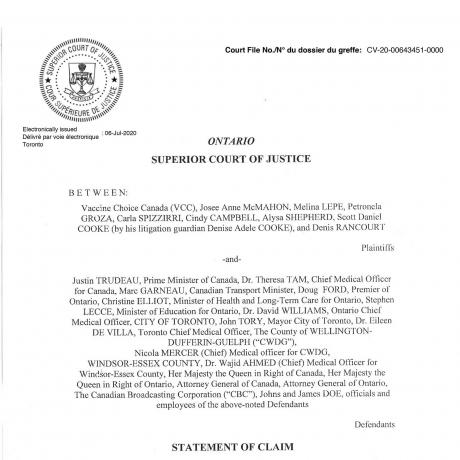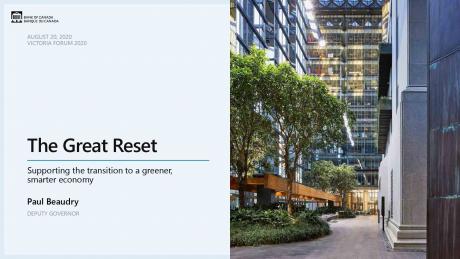The principles of good faith and bad faith are “fundamental to more or less every legal system on a world scale” but not, it might seem, to American constitutional law. Thousands of cases have applied these principles in fields ranging from contracts to bankruptcy to nuclear disarmament. Outside the criminal procedure and qualified immunity contexts, however, the language of good faith and bad faith rarely surfaces in constitutional doctrine. Nor have these ideas received focused attention in the secondary literature. Constitutional law, in these ways, has been an enclave of good faith and bad faith exceptionalism.
This is not because of any shortage of bad faith in constitutional circulation. To the contrary, even a cursory review of the popular, governmental, and academic commentary reveals that insinuations of others’ bad faith suffuse constitutional debates — so much so that it can be hard to make sense of the debates without an appreciation of these insinuations and the work that they do. The absence of “bad faith talk” from large sections of the United States Reports, then, re- flects a disconnect not only between constitutional doctrine and nonconstitutional doctrine but also between constitutional doctrine and constitutional culture.3 Relative to their role in other areas of law, charges of bad faith are both less important (within the courts) and more important (outside the courts) in the constitutional domain.
This Article excavates these features of our constitutional practice and begins to explore their causes and consequences. In so doing, the Article aims to explain why courts have been reluctant to enforce norms against constitutional bad faith as such to provide a framework for understanding the different forms that constitutional bad faith may take and the functions that bad faith talk may serve; and to illustrate how belief in the Constitution as America’s “civil religion” sustains suspicion of interpretive bad faith. A rich vein of doctrinal scholarship has explored several related topics, such as judicial review for legislative pretext. Investigating constitutionalism through the lens of bad faith allows us to go further. It facilitates sharper comparisons with other bodies of law, and it illuminates the dynamic relationships between judicial doctrine and extrajudicial discourse and be- tween constitutional veneration and contestation.
One notable point suggested by this inquiry is that the occlusion of bad faith claims in the courts may be bound up with their profusion in the culture. Another is that the phenomenon of constitutional faith has a paradoxical affinity with — and in fact propagates — the humbler yet bleaker idea of constitutional bad faith. Although I cannot hope to prove any causal story here, I hope to demonstrate the plausibility of these linkages and thereby to open up new research directions. The concept of bad faith, as I will try to show throughout, supplies a valuable if unsettling tool for navigating the intersection of constitutional law and politics.
In pursuit of these goals, the Article ranges widely over constitutional doctrine, constitutional discourse, and constitutional theory.
- Part I provides necessary context by sketching the role played by good faith and bad faith in private law and international law. Although the concept of bad faith can be slippery, its core meanings are fairly consistent throughout the law and center on dishonesty, disloyalty, and lack of fair dealing. This Part also introduces the philosopher Jean- Paul Sartre’s famous notion of bad faith, which emphasizes not deception of others (or what lawyers call subjective bad faith) but rather deception of self. The line between subjective bad faith and Sartrean bad faith, this Article submits, is likely to prove especially unstable in constitutional law — which makes the turn to Sartre more fruitful and less fanciful than it might seem.
- Part II takes up the question of why the principle of bad faith has been marginalized in significant swaths of constitutional doctrine, from Commerce Clause legislation to interstate compacts to traffic stops. The principle has made greater inroads in “rights” cases. Judges apply it explicitly when reviewing certain allegations of individual officer misconduct and implicitly in various other areas, as when they entertain claims of impermissible discriminatory motive. But these inroads are discrete and contested; even on a charitable construction, they do not place the principle in anything like the position that it occupies throughout much of private law and international law. Recent efforts by President Obama’s critics to formulate a duty of good faith under the Take Care Clause — which on its face demands “faithful[]” execution of the laws — only underscore the persistence of constitutional exceptionalism when it comes to confronting bad faith. Possible explanations for bad faith’s relatively low profile in structural case law, this Part posits, include the unique degree to which judicial discretion is feared and constrained in constitutional decisionmaking, and the unique degree to which constitutional theory embraces institutional opportunism and methodological pluralism.
- Part III moves beyond adjudication to consider how bad faith manifests itself in other sites of constitutional practice. Drawing on common understandings of bad faith as well as a range of contempo- rary controversies, it offers a taxonomy of constitutional bad faith meant to capture both ideal types of the phenomenon and these types’ contingent connections to specific actors. The notion of constitutional bad faith as divided loyalty to the canonical document, for instance, is now associated with “living constitutionalism” and the political left, whereas the notion of constitutional bad faith as agency-denying self-deception is more associated with originalism and the political right. This taxonomy enables us to see, among other things, that insinuations of bad faith are not extraordinary but pervasive in American constitu- tional discourse and that the language of constitutional outrage has a coherent normative structure. Even as bad faith talk has been side- lined in constitutional doctrine, it has taken center stage in constitutional culture.
- Part IV considers broader ramifications of these points in light of the Constitution’s place in American civil religion. Charges of constitutional bad faith, it contends, serve important psychological, political, and hermeneutic ends. They help to police the boundary between “on-the-wall” and “off-the-wall” arguments and thus to guide the process of constitutional construction. At the same time, by moralizing disagreement, these charges undermine the deliberation and trust needed to achieve constitutional compromise. The practical unamendability of the U.S. Constitution, furthermore, both reinforces and is reinforced by a culture of interpretive bad faith. The worry arises that there is no exit from this vicious circle.







Comments